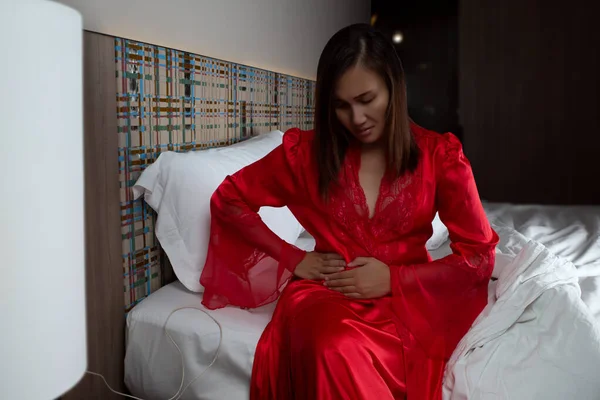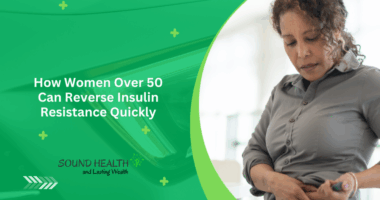Pain should never be dismissed, especially when it comes from conditions like uterine fibroids, which affect millions of women worldwide. Increasingly, celebrities have begun to speak out about their experiences with these common growths, emphasizing a critical message: “You should not normalize pain,” says Dr. Esohe Faith Ohuoba, MD. Their stories encourage women to listen to their bodies, recognize the symptoms, and seek medical attention without hesitation. This shift in dialogue is invaluable because many women suffer silently, unaware that what they endure is not “just normal.”

Celebs are sharing their uterine fibroid symptoms
Last month, tennis star Venus Williams spoke about the symptoms medical professionals ignored before she was diagnosed with uterine fibroids.
“My symptoms were extreme pain,” Williams said in an interview with Today. “You know, getting so much in pain that maybe you throw up. Or you can’t get off the ground. I missed practices because of that. Just, you know, hugging the toilet.”
Despite the severity of her symptoms, Williams was told what she was experiencing was not out of the ordinary. “One doctor told me, at the time I was maybe 37, he said ‘this is a part of aging. This is normal,’” Williams said. Another doctor recommended she get a hysterectomy. Ultimately, she finally found a doctor who took her concerns seriously and was able to perform a myomectomy, or removal of fibroids from the uterus.
And Williams isn’t the only one speaking about uterine fibroid symptoms. Earlier this month, ABC News anchor Linsey Davis spoke about her experience with the condition alongside Tamar Braxton and Cynthia Bailey, both of whom also have uterine fibroids.
“You should not normalize pain.” —Esohe Faith Ohuoba, MD
In the conversation, Davis shared that one of her symptoms was bloating, which led people on social media to question if she was pregnant. “It was such an embarrassing moment … but it is a pouch that, you know, happens” to women with fibroids sometimes, said Davis.
What Are Uterine Fibroids?
Uterine fibroids are noncancerous tumors that develop within the muscular wall of the uterus. Often referred to as leiomyomas or myomas, these growths can range from tiny seedlings to large masses that distort the uterus’s shape. Although benign, their presence may cause significant discomfort or complications, depending on size, quantity, and location. The exact cause remains uncertain, but factors like hormone levels—particularly estrogen and progesterone—play a critical role in fibroid growth. Genetics and lifestyle factors might also contribute.
Though fibroids are common—affecting up to 70-80% of women by age 50—many remain asymptomatic, making diagnosis tricky. Those with symptoms can experience a range of issues, some subtle and others markedly disruptive to daily life.
Why Black Women Are Diagnosed at a Higher Rate
Research consistently shows that Black women face a disproportionally higher incidence of uterine fibroids compared to women of other racial and ethnic groups. They tend to develop fibroids earlier in life, experience more severe symptoms, and have larger or more numerous fibroids. According to the National Institutes of Health (NIH), Black women are two to three times more likely than white women to have fibroids, and their symptoms often lead to more aggressive treatments, including surgery.
Several theories seek to explain this disparity, including genetic predispositions, environmental exposures, dietary patterns, and differences in access to medical care. Social determinants of health, such as stress and systemic inequities, might also exacerbate symptom severity. Addressing this imbalance remains a priority for both physicians and public health experts aiming to reduce gaps in women’s health outcomes.
Uterine Fibroid Symptoms to Watch For: Don’t Ignore These Signs
Not all women experience symptoms, but when fibroids do cause discomfort, recognizing the warning signs is essential. The most common symptoms include:
- Heavy or prolonged menstrual bleeding that may lead to anemia
- Pelvic pain or pressure, sometimes described as a constant ache or sharp spasms
- Frequent urination due to pressure on the bladder
- Constipation or bloating linked to fibroids pressing against the rectum
- Pain during intercourse (dyspareunia)
- Lower back or leg pain resulting from nerve compression
- Enlarged abdomen or a visible mass in the pelvic area
- Difficulties with fertility or repeated miscarriages for some women
It is critical to understand that these symptoms might be mistaken for other gynecological issues or normalized as “part of being a woman.” According to Dr. Ohuoba and many others, this normalization delays diagnosis and treatment, sometimes allowing the growths to enlarge or worsen symptoms.
Not All Women Experience Symptoms — Why Early Detection Matters
While many women with uterine fibroids remain symptom-free, those asymptomatic cases still require monitoring. Regular gynecological check-ups, including ultrasounds or other imaging, help detect fibroids early. Early detection allows for more treatment options and may prevent complications.
In some cases, fibroids shrink after menopause when hormone levels decline, but this is not guaranteed. Untreated fibroids can lead to severe anemia from excessive bleeding or significantly impact quality of life through chronic pain and discomfort.
Celebrities who have shared their stories highlight how ignoring early warning signs prolonged their suffering unnecessarily. Awareness campaigns and candid conversations in mainstream media bring much-needed attention to a condition that often goes undiscussed.
Celebrity Stories: Turning Pain into Advocacy
Women in the public eye have powerful platforms, and many choose to use theirs to shed light on uterine fibroids. Their narratives resonate because they reveal personal struggles with symptoms like excruciating period pain, fatigue from anemia, and even the emotional toll of invasive surgeries.
One example is a well-known actress who disclosed her multiple surgeries to remove fibroids after years of hiding her pain. Another public figure spoke out about the importance of not settling for dismissive medical opinions, encouraging women to seek second opinions when symptoms persist.
Their openness helps dismantle stigma and misinformation, reminding all women that pain is a signal, not a symbol of strength. This shift in attitude promotes earlier consultation, better outcomes, and improved support.
Understanding uterine fibroids is a crucial step toward better women’s health. By recognizing symptoms, appreciating how fibroids disproportionately affect Black women, and listening to diverse voices sharing their journeys, the message is clear: you should not normalize pain. Medical advice, proper diagnosis, and empathetic care provide pathways to relief and healthier lives for those affected.
Also Read | Tamar Braxton ‘Almost Died’ After Bloody Accident on August 17










